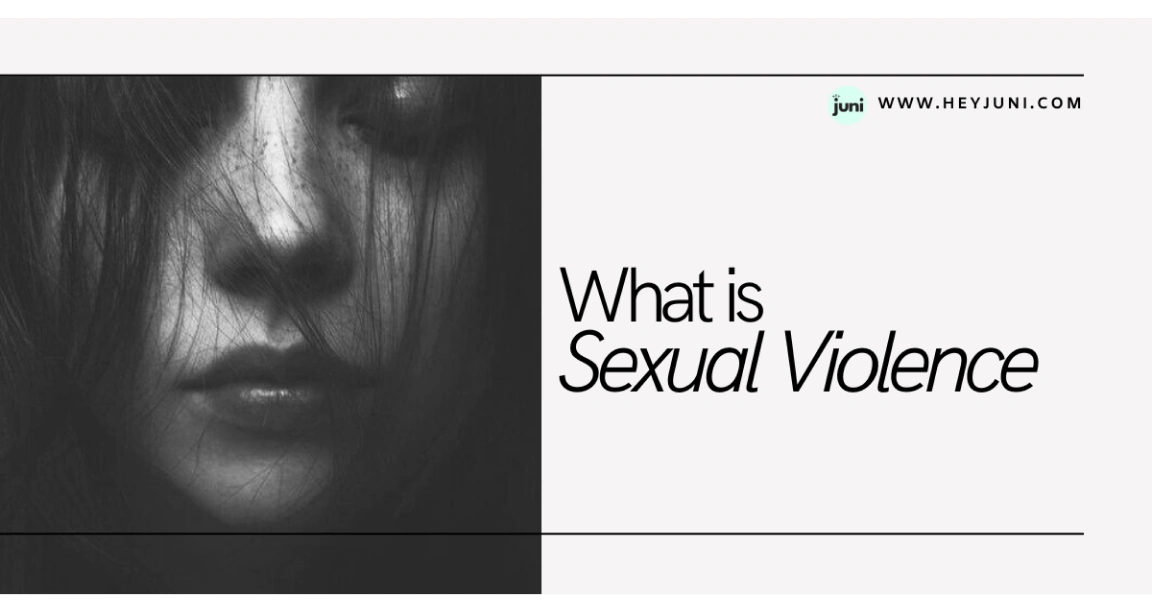Blog
Your space for exploring about HeyJuni and mental health resources, right at your fingertips!
The First Step to Breaking the Stigma Is to Understand Sexual Violence
Written by: Askhita Bhatia
Date created: 06/12/24

Sexual violence is a challenging topic, often surrounded by silence, stigma, and misunderstandings. It's also insidious, not always explicit or easy to recognize —yet its effects are deeply felt. It's crucial to deepen our understanding of what sexual violence is and what it could look like. Awareness is the first step toward identifying, confronting, and ultimately supporting those impacted. Beyond the legal definitions, it's about human experiences, the impact of trauma, and, ultimately, finding paths toward healing and empowerment for those who have experienced sexual violence. In this article, we'll explore the nuances of sexual violence, how it shows up in daily life, and why talking about it matters — for everyone.
Defining Sexual Violence
At its core, sexual violence is any sexual act or attempt to obtain a sexual act by coercion, unwanted sexual advances, or acts directed against a person's sexuality using force, harassment, manipulation, or without their consent. Sexual violence spans a range of behaviors, from unwanted touching and inappropriate comments to more severe acts like assault and rape. It's important to recognize that sexual violence isn't limited to any single demographic; it can happen to people of all genders, ages, races, and socioeconomic backgrounds. One of the central factors in sexual violence is consent. Consent must be freely given, informed, enthusiastic, and can be withdrawn at any time. If someone is under duress, impaired, or feels pressured into a sexual situation, genuine consent isn't possible. A lack of consent turns any interaction into an act of sexual violence.
Common Forms of Sexual Violence
Sexual violence can take many forms, and understanding these distinctions can help in recognizing and addressing them:
1. Sexual Harassment
Often manifesting in workplaces, schools, and even public spaces, sexual harassment includes unwelcome advances, comments, or actions of a sexual nature. This might look like making unwanted sexual jokes, sending explicit texts, or repeatedly asking for dates despite being turned down. While it may be dismissed by some as "harmless," sexual harassment can lead to lasting psychological and emotional harm.
2. Sexual Assault and Rape
Sexual assault is any unwanted sexual contact, ranging from groping to more invasive forms of assault. Rape is a specific type of sexual assault that involves forced or non-consensual penetration. Both can have serious physical, mental, and emotional repercussions. Importantly, acts like rape aren't about sexual gratification; they're about control, power, and stripping the person being assaulted of their autonomy.
3. Coercion and Manipulation
Sometimes, sexual violence isn't violent in the traditional sense but relies on manipulation or pressure. Coercion can involve making someone feel obligated or intimidated into sexual acts through guilt, blackmail, or emotional manipulation.
4. Online Sexual Harassment and Image-Based Abuse
With the rise of digital spaces, sexual violence has extended online. Image-based abuse (such as non-consensual sharing of intimate images) and online harassment are forms of sexual violence that can be just as harmful and invasive as physical acts.
Why Recognizing Sexual Violence is Important?
Sexual violence isn't just a "private matter" or something that happens in rare cases. It affects millions worldwide, with ripple effects that touch families, workplaces, communities, and beyond. When we fail to recognize and confront sexual violence, we contribute to a culture that allows it to persist. By acknowledging it, speaking out, and showing support, we foster a safer and more inclusive society.
Want the latest updates on HeyJuni?
Want the latest updates on HeyJuni?
By clicking on subscribe, you agree to receive occasional emails from HeyJuni.